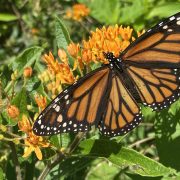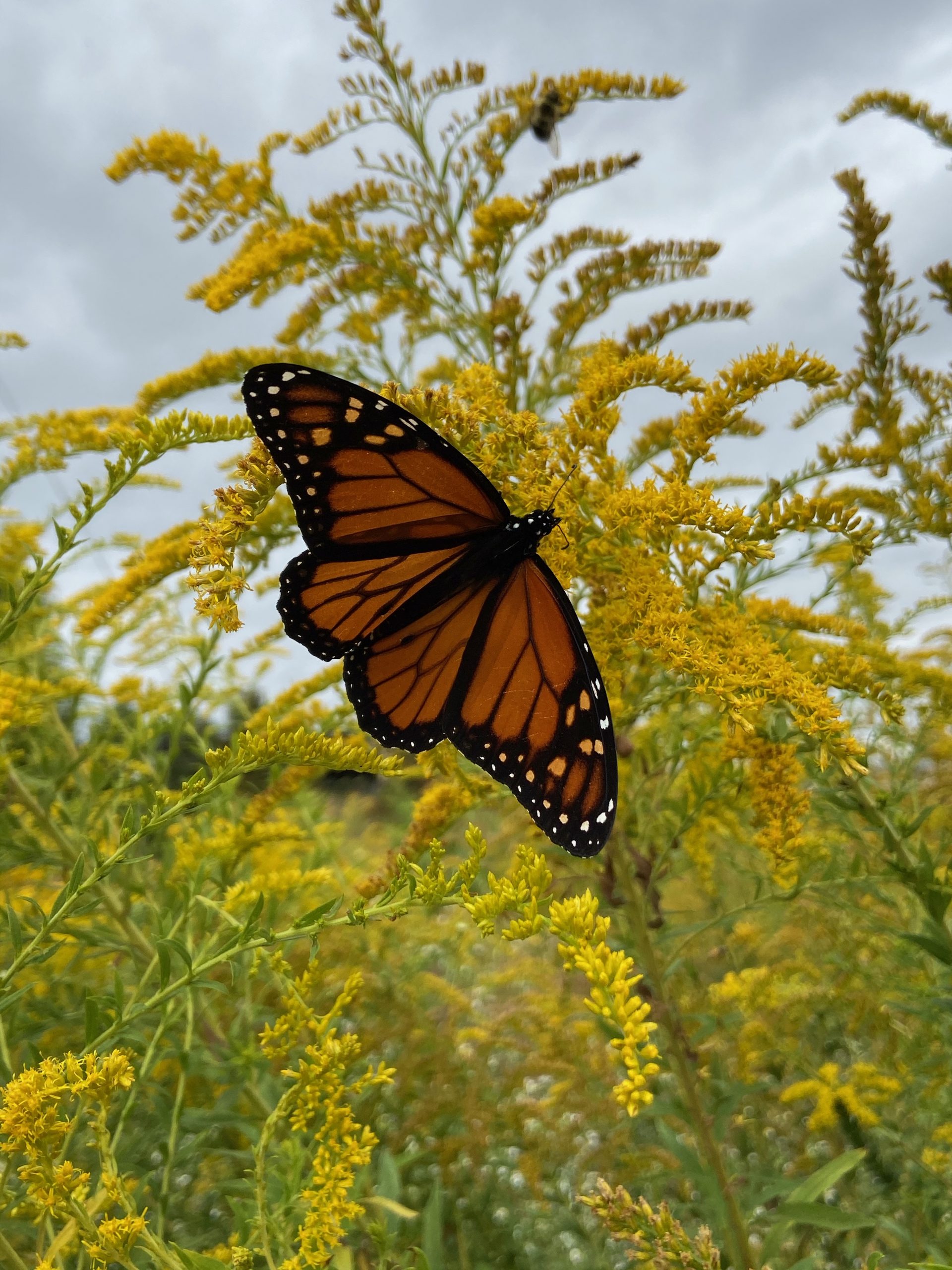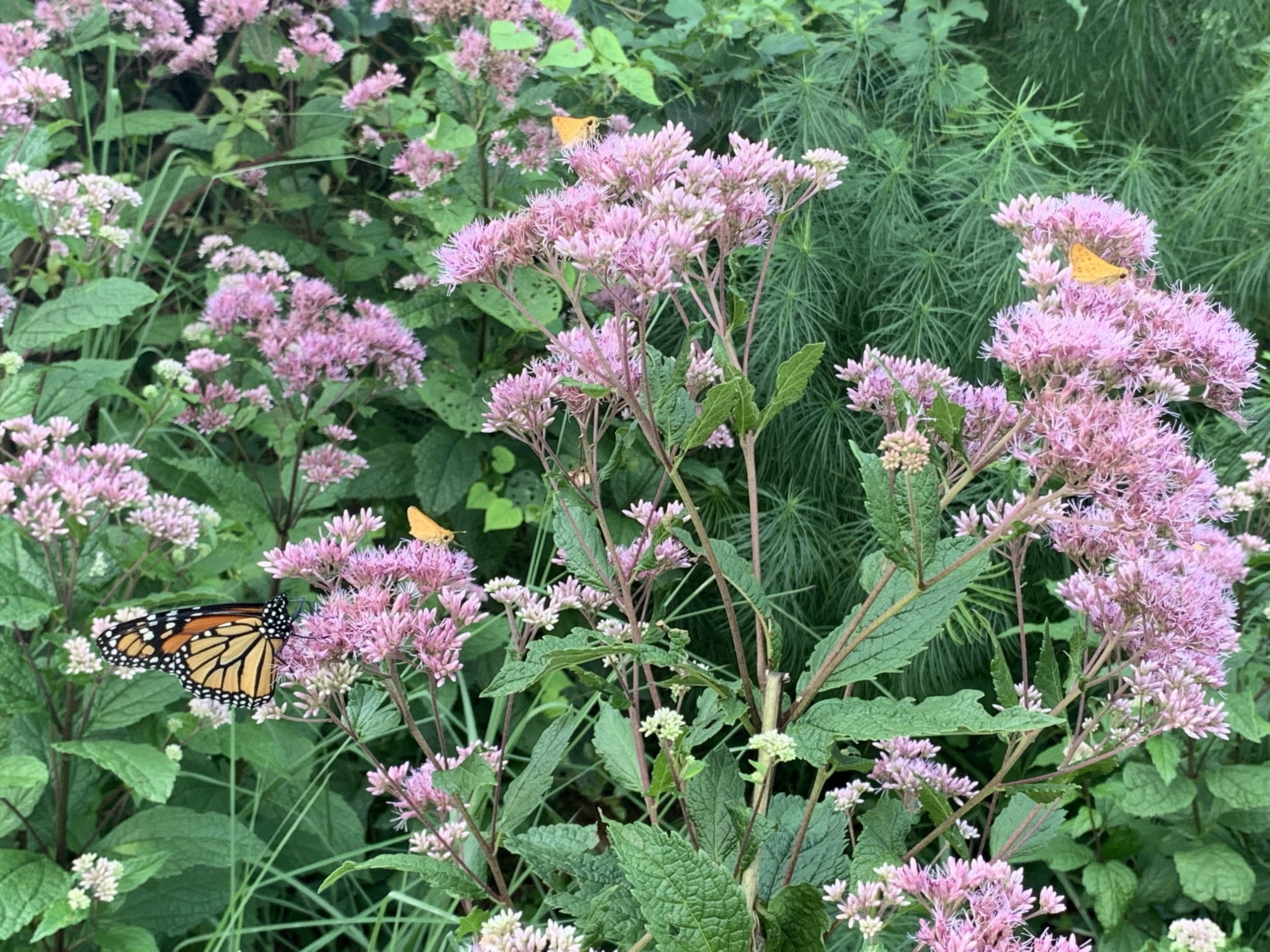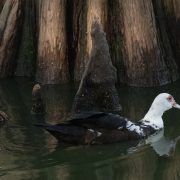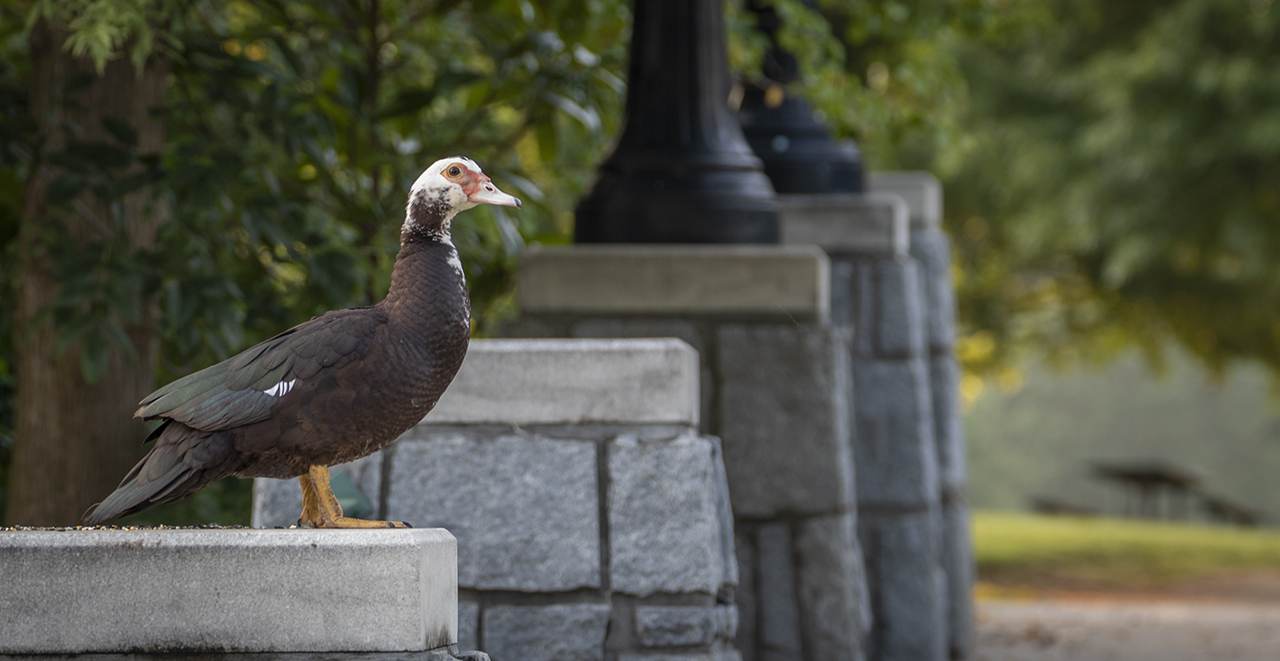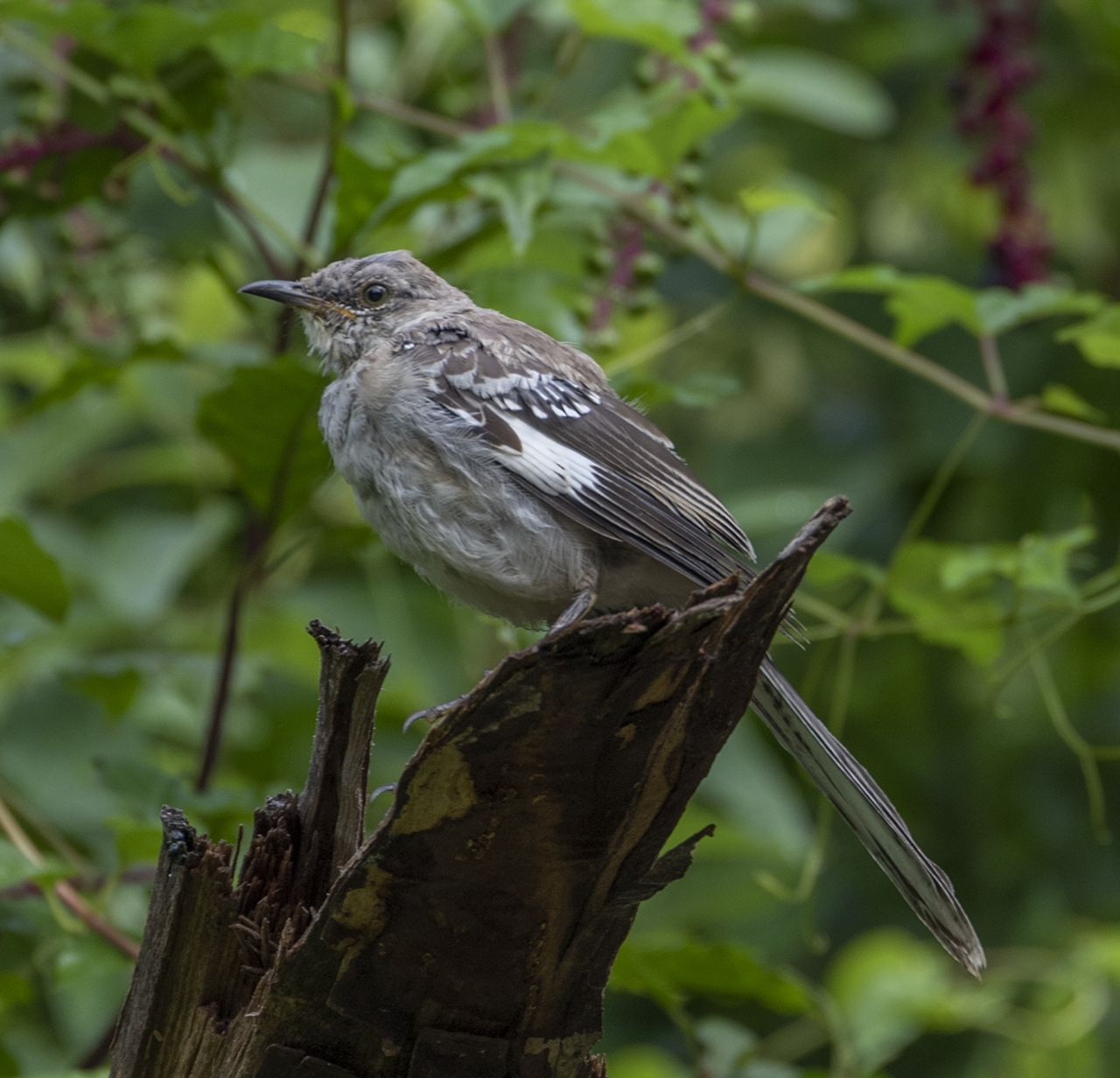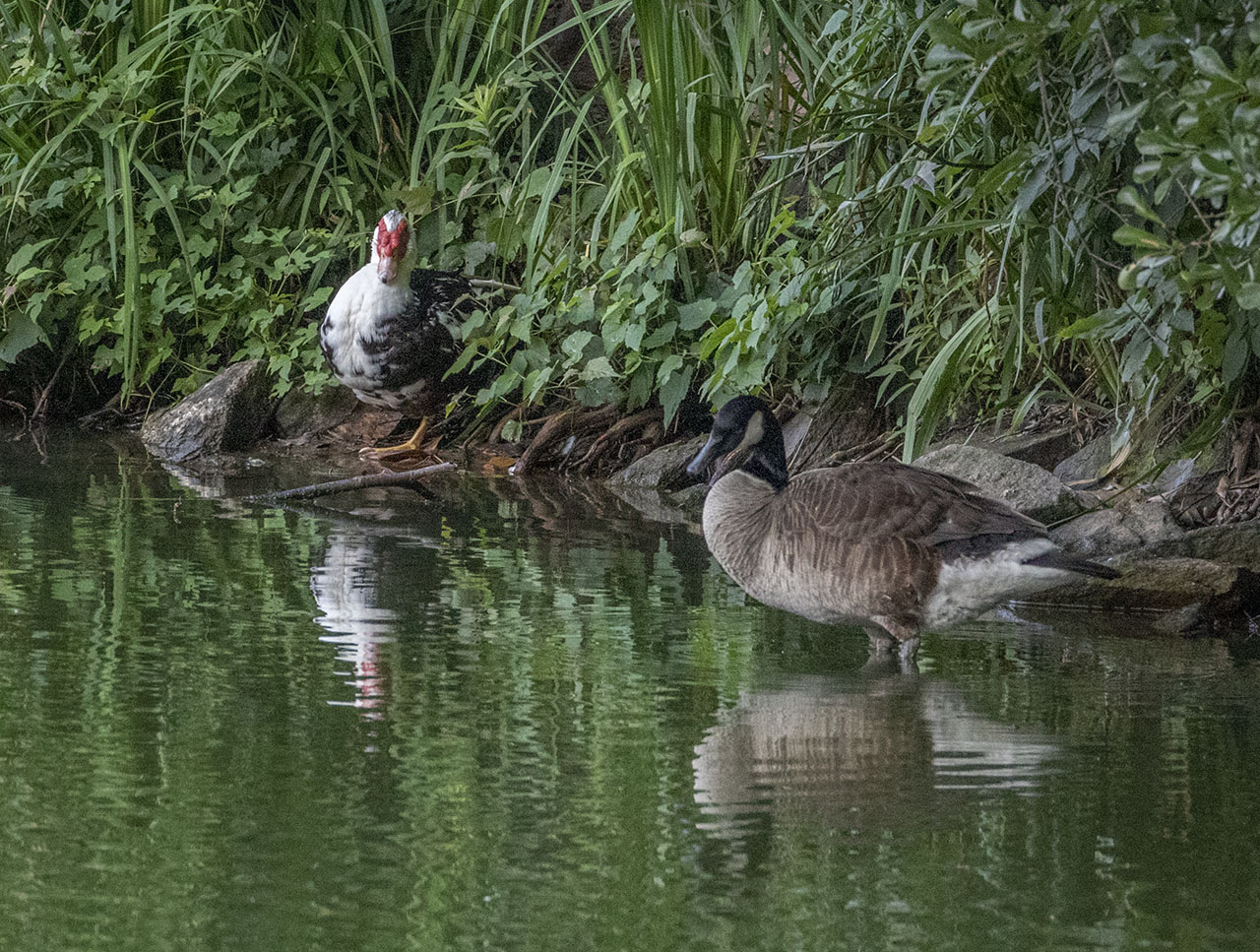Monarch Marathon: Fall Butterfly Migration in Piedmont Park
Perhaps the most iconic migratory insect is the Monarch Butterfly. These majestic butterflies are easily identified by their bright orange wings with delicate black line details and white dots around the border. What makes these butterflies so iconic is their migration, totaling nearly 3,000 miles for some butterflies.
Photo Credit: Grace Manning
Monarchs lay their eggs on Milkweed plants, soon to be food for the caterpillars. Those hungry caterpillars emerge and begin their journey to becoming a butterfly. Once they have completed their metamorphosis, they will either begin breeding, or depending on the timing, begin migrating. When the days get shorter and the weather a bit colder, adult Monarchs migrate from the United States and Canada south, to California and Mexico. It is there they will wait out the winter on the oyamel fir trees. When the days grow longer, the Monarchs fly back up north in search of their host plant, Milkweed, once again to breed.
Photo Credit: Grace Manning
In Georgia we are lucky enough to be on the path. Come September these butterflies will head south, flying at about treetop height along their journey. One of the threats facing Monarchs today is the loss of their breeding plant, Milkweed. This plant plays a critical role in Monarch survival as the only place they will lay their eggs, and the only food for caterpillars. Looking to ensure a monarch sighting this fall? Plant milkweed in your yard, or in large planters on your patio.
Author: Dana Buskovitz, Piedmont Park Conservancy Education Coordinator
Want to learn more about migration? Read part one of our migration blog series about birds you can spot in the Park during the fall.

